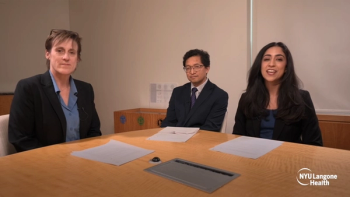
Automatic iris registration proves valuable in clinical trial
Based on data from the last available follow-up visit (mean 2.5 months postop), the iris registration group had 50% less residual cylinder compared with the controls.
"There is no doubt that there can be cyclotorsion of the eye when a patient changes from an upright position in front of the aberrometer to lying supine under the laser for treatment. In addition, the pupil centroid can also shift relative to the outer iris boundary because of a change in pupil size between the dim wavefront exam room and the more illuminated treatment room," said Dr. Tamayo, director, Bogota Laser Refractive Institute, Bogota, Colombia.
The international study included 285 eyes of patients treated with registration performed manually and 270 eyes that underwent treatment with the new automated technology designed to compensate for cyclotorsional movement and pupil centroid shift. The Bogota Laser Refractive Institute, Bogota, Colombia, was one of four participating centers.
Dr. Tamayo reported the findings from a subgroup of 116 eyes selected for having higher preoperative cylinder (at least 1.5 D). Of those eyes, 59 were treated with iris registration and 57 were controls having surgery with manual registration techniques. Mean preoperative cylinder in those two treatment groups was 2.2 D and 2.3 D, respectively.
Based on data from the last available follow-up visit (mean 2.5 months postop), the iris registration group had 50% less residual cylinder compared with the controls, 0.2 versus 0.4 D, respectively. In addition, a significantly greater proportion of eyes in the iris registration group achieved uncorrected visual acuity (UCVA) of 20/20 or better, 92% versus 82%, respectively. The rate of 20/25 or better UCVA was also higher among eyes treated with versus without the use of iris registration, 95% versus 91%, although the difference in rates between groups was not statistically significant.
Several published studies have demonstrated the potential for significant cyclotorsional movement of the eye between the wavefront exam and treatment. In one study of 51 eyes, the mean change was 2.2°. In two other studies, one including 240 eyes and the second evaluating 50 eyes, the mean amount of cyclotorsional movement was about twofold higher. The rotation exceeded 10° in 8% of eyes in one trial and was more than 7° in 25% of eyes in the other.
In the study Dr. Tamayo reported, the mean cyclotorsional movement among the 59 eyes in the automatic iris registration group was 2.4°.
Newsletter
Don’t miss out—get Ophthalmology Times updates on the latest clinical advancements and expert interviews, straight to your inbox.













































